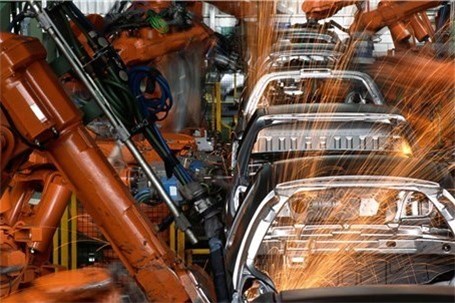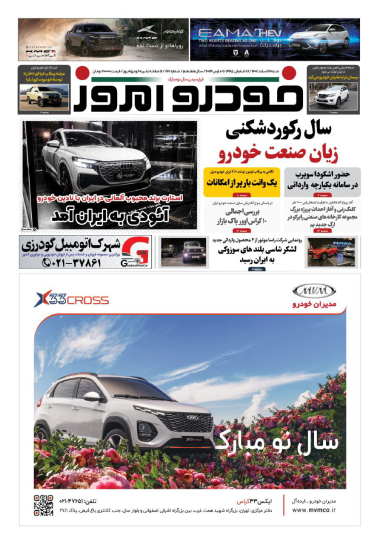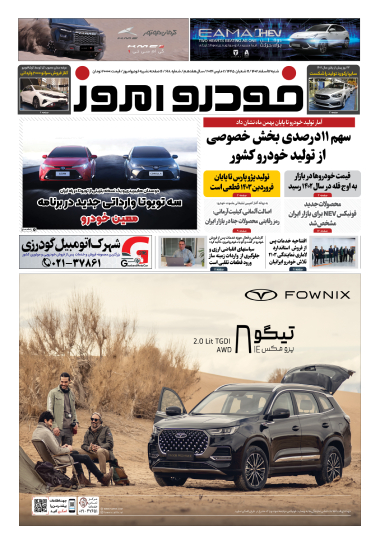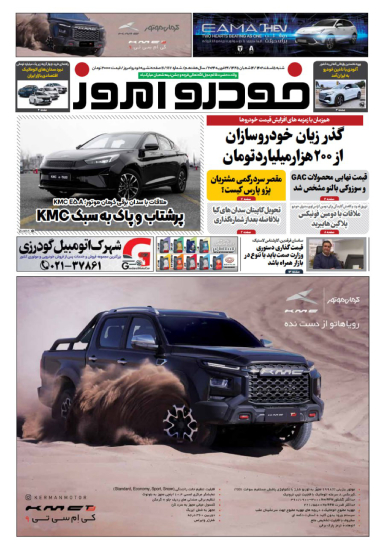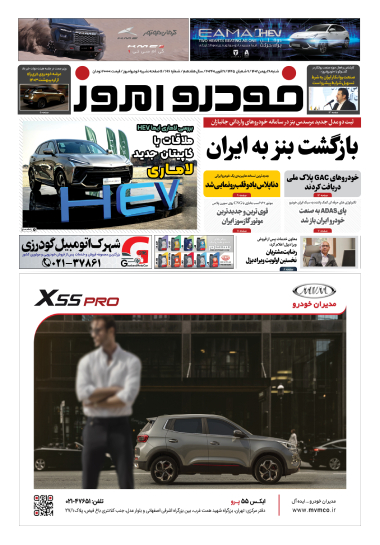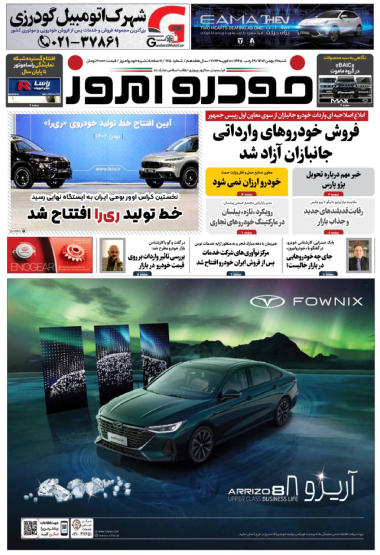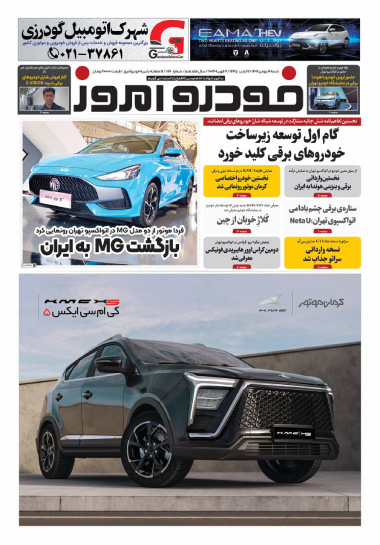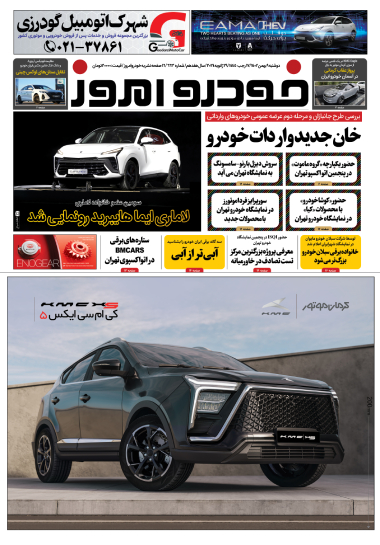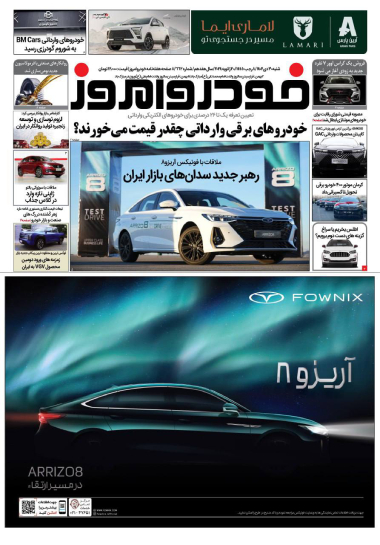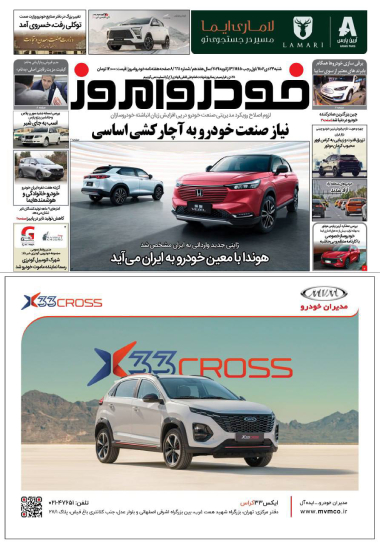


Effects of Automotive Ties With China
Asre Khodro: The rapid increase in Chinese-made cars and auto parts in Iran and the rather unusual collaboration between Iranian and Chinese automotive companies has raised concern among business leaders who warn that overreliance on a relatively young auto industry whose level of experience and technical know-how in the auto sector hardly exceeds that of Iran could cripple domestic growth.
Reporting "Asre Khodro", Data from the Iran Customs Administration (ICA) shows that import of Chinese cars and spares into Iran grew 2.5 times in the first three quarters of 2014 compared to 2013. Iran imported vehicles and parts worth $550 million from China in the said period, whereas the figure jumped to $1.3 billion last year, local media outlets report. Iran is the fourth largest market for Chinese cars after the US, Japan and Russia.
A glance at Iran's auto industry shows that it has grown from merely assembling western manufactured cars in the 1960's to developing car platforms and also venturing into exports. The Iranian car industry, comprising giants like Iran Khodro, Bahman Group and Saipa, now ranks 13th in the world in terms of production and the 5th fastest growing worldwide. With annual production at 1.6 million vehicles, this industry accounts for 10 percent of the GDP.
China's car industry, which was born almost in tandem with Iran, has grown rapidly over the past decade thanks to the policies of its government. The main strategies adopted by the Asian economic giant include: expanding auto production to meet and match foreign brands, encouraging foreign automakers to produce their cars in China, and building technical collaboration with the big international companies in the key R&D sector.
A variety of Chinese-made sedans and SUVs found their way into the Iranian market over the past decade due to the mounting pressure of economic sanctions that made western cars and spare parts almost inaccessible to the huge market in the country.
While China has succeeded in boosting both production and sales in the past few years by mostly copying foreign automobile platforms, experts say China's gas-guzzling industry still has a long way to go before reaching maturity and expertise necessary to innovate and manufacture its own platforms.
What most Iranian economists worry about is that with so much focus on importing cars from China without the basic R&D collaboration with that or any other country, the domestic auto sector would indeed suffer only to be left much further behind. Likewise, with the huge investments in China’s expanding auto sector it is not hard to imagine that its auto companies will grow faster than most experts anticipate.
In an article in the Persian daily Donay-e-Eghetsad, professor of auto mechanical engineering in Tehran’s K.N. Toosi University of Technology, Shahram Azadi has drawn attention to the impact of China’s auto industry on the Iranian market, pointing to both challenges and opportunities in this important segment of the Iranian economy.
Cheaper is Attractive
The foremost impact is the flow of different classes of Chinese sedans and SUVs. This is followed by the flood of poor quality Chinese spare parts (replacing those from France, South Korea, etc.) due to the
UN and western sanctions to stop and reverse Tehran’s nuclear energy program. The pattern of cheap imports took on new proportions when Iranian companies started to produce/assemble four-wheelers under Chinese license. The most recent joint ventures have resulted in Iranian automakers using Chinese-made platforms – often duplicates of other foreign platforms - to produce new domestic brands.
The first major threat, he says, to Iranian automakers from the tsunami of Chinese sedans and hatch-backs, “especially if the custom tariffs are cut further in the coming years, is the increasing number of car owners switching to cheaper Chinese models.” The trend should be expected to grow further if and when the Chinese manage to improve quality and reduce prices.
The second problem is the “lack of knowledge transfer between the two sides in design and development, arising from the lack of sufficient expertise and maturity of China’s auto sector,” which many observers say is still in its infancy. Hence, the process which began in Iran in the 1980s and 90s when new products were designed and manufactured in collaboration with prominent automakers could come to a sad end with overdependence on the Chinese. “This is pretty conceivable if the domestic auto sector remains oblivious to its obligation of paramount importance: research and development,” the newspaper quoted him as saying.
But, if vision and wisdom prevails, collaboration with the Chinese could well turn into an opportunity. For now, the Chinese auto sector allows for collaboration between the two countries based on transfer of technical know-how in areas where Iran lacks sufficient knowledge. Chinese investment in Iran for developing new products based on technology transfer from advanced countries should be seen as another positive factor for and by the Iranians.
The university instructor warns in his article that the present reliance on importing or assembling Chinese vehicles could further delay Tehran’s declared agenda to sell Iran-made cars in the highly competitive global market. He also called for knowledge-based collaboration with China and other major producers and creating the right conditions for investment in new models in collaboration with the leading Asian and European automakers.
Source: financialtribune.com
- $۲ Billion Aid Package to Bolster Automotive Industry
- Renault to Return to Iran: Deputy Minister
- Auto supplier Duerr stops Iran business due to sanctions: Boersen-Zeitung
- Customs barriers have prevented the growth of localization
- M&M plans SUV foray into Iran
- Automotive Industry in Iran, a short review
- Iran’s Car Industry and the Localization Conjectures
- Automakers are forced to implement new car standards
- Removing some price ranges from the car market
- Complete privatization; First Iran Khodro and Saipa after that
نابسامانی بازار خودرو ناشی از بیتوجهی دولت به واردات است
واردات ۸.۴ میلیارد دلاری قطعات خودرو و موتورسیکلت در سال ۱۴۰۲
واردات ۸ تا ۱۰ هزار خودروی برقی به کشور تا ۳ ماه آینده
چرا مونتاژکاران هر شش ماه قیمت را بالا میبرند، اما خودروسازان داخلی نه
فولکسواگنهای ارزان میآید؟
تسلا ۱۴ هزار نفر از کارکنانش را اخراج میکند
پرواز شرکت خودروسازی ویتنامی با خودروهای برقی
فولکسواگن ID۴ توسط ماموت خودرو عرضه میشود
هفت تفاوت مهم لاماری ایما HEV و نسخه معمولی
استارت افزایش قیمت کارخانه ای خودروها با پارس خورد
۶۰ لیتر سهمیه بنزین اردیبهشتماه ۱۴۰۳ بامداد شنبه شارژ میشود
خودروهای جدید بیوایدی آمدند
اجاره خودرو در کیش بهصرفهتر است یا استفاده از تاکسی؟
اراک؛ مقصد بعدی اتوبوسهای برقی
افزایش ۱۶ تا ۴۵ درصدی کرایههای مترو، اتوبوس و تاکسیها از شنبه

